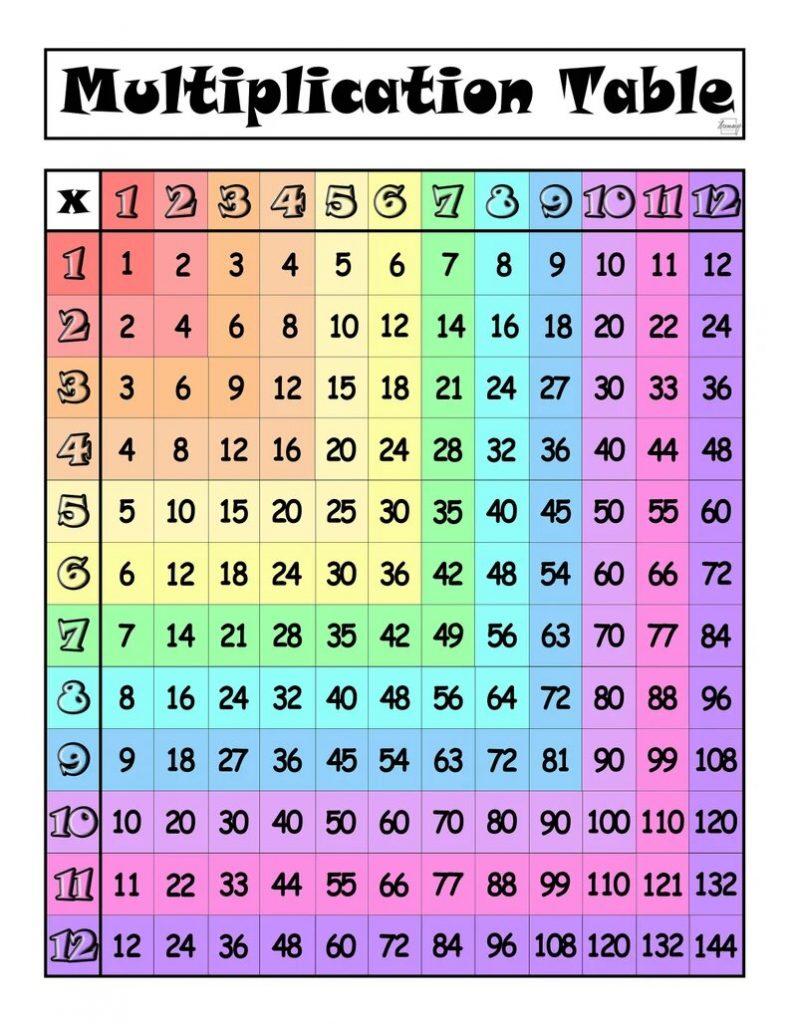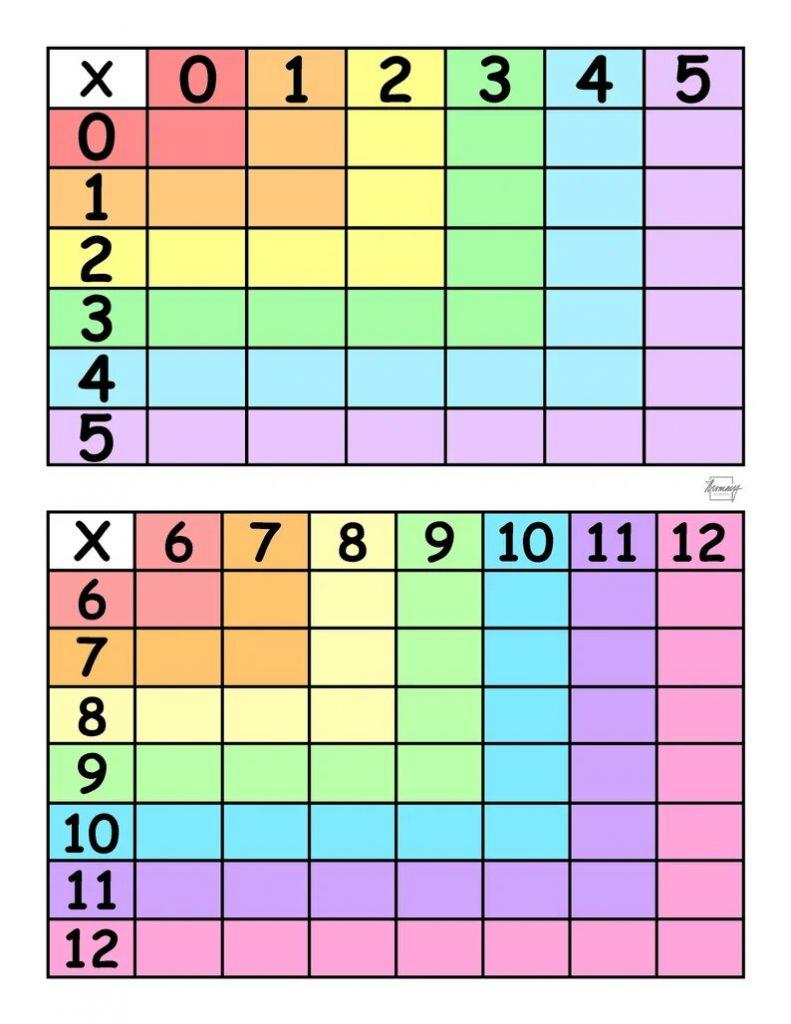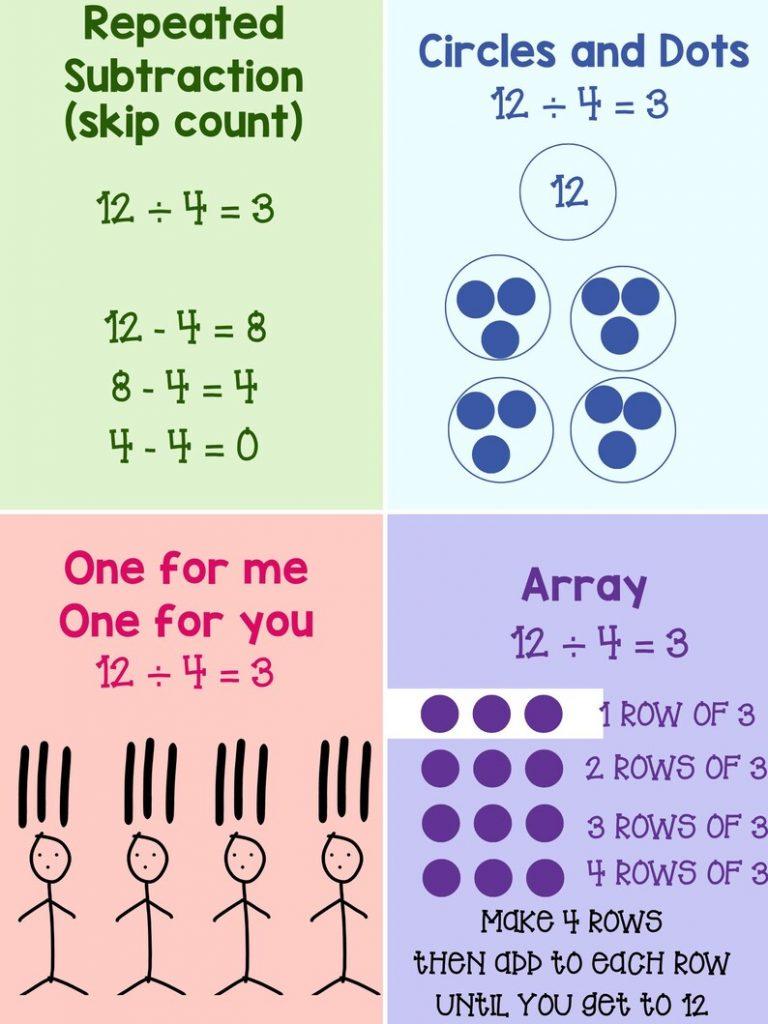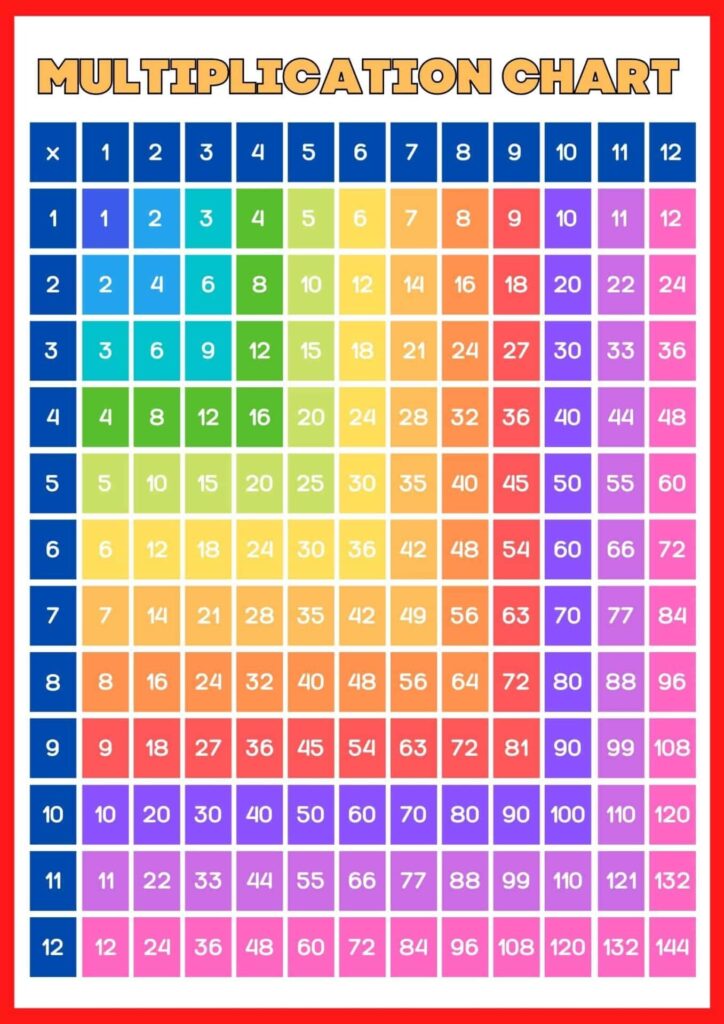There are a few reasons why teaching multiplication in elementary school can be challenging. First, it is a more abstract concept than addition or subtraction. This can make it difficult for some students to grasp. Then, there is all the memorization involved in multiplication. Again, this can be difficult for some students, especially if they don’t have a suitable method for remembering the facts. Finally, once students start learning about fractions and decimals, they need to be able to apply their multiplication knowledge to these concepts as well. So it is essential that they master the skill early on to progress to the more challenging concepts.
When teaching multiplication, you may be tempted to just throw a bunch of ideas at your students that they need to memorize and practice. But there are better ways to do it.
You will seldom find Anchor Charts 101 in the course material of a teaching certification. Still, anchor charts are one of the most effective and popular classroom tools. There are many questions teachers have about anchor charts, their purposes, how to get started, and when to use them. Here’s how we can help you! As soon as you begin using anchor charts (if you haven’t already), they’ll quickly become one of your favorite strategies.
Table of Contents
- Elements of a Multiplication Anchor Chart
- Different ways to use anchor charts to teach multiplication
- Multiplication resources from Teach Simple
- Other Multiplication Resources
- More multiplication strategies
- Multiplication Word Problems
- Multiplication Charts From You’ve Got This Math
Elements of a Multiplication Anchor Chart
An anchor chart is a visual representation of key concepts or strategies that can be referred to repeatedly. They are beneficial in math, where new concepts are introduced frequently, and it can be challenging to keep track of everything. So, what do you need to consider when creating or finding an effective anchor chart.?
Choose your focus
Let’s start with the basics. First, decide what you want your students to learn from your anchor chart. As a general rule, an anchor chart should have a focus that should be reflected in all the images and visual elements you use.
For example, if your focus is “fact families,” you will have images that show the “families” and the “sums”. On the other hand, if your focus is “visual patterns,” you will use images that show the visual patterns of the multiplication facts.
Make it visual
An anchor chart isn’t just words—it’s a visual representation of the information you want students to learn. So, make sure that you include lots of visuals in your chart. Images and graphics can help bring your anchor chart to life and engage students. Text is boring, but if you add visuals, it will keep your students engaged while they learn. This can help prevent boredom, which can be an issue in the classroom. When creating your anchor chart, consider the types of visuals you can use. You can use tables, graphs, images, or even videos (when you use a digital format). The key is to use visuals that help students understand the information in the anchor chart.
Create labels and a key for your anchor chart
Once you have found the best images for your anchor chart, create labels and a key for your anchor chart. These are necessary for two reasons. First, they help students navigate your anchor chart. Second, they clarify your anchor chart and help students understand how the images relate.
For example, suppose you are creating an anchor chart to help students memorize the multiplication fact families. In that case, you can use the labels “families,” “sums,” and “their product.” Clarifying labels (e.g., “Two groups of four will make eight”) help students understand the images on your anchor chart.
Add in some self-check questions
An anchor chart isn’t just one thing. It’s a visual summary of essential information. This means that you should go beyond just the visual aspect. You should also add some self-check questions. Self-check questions are critical to ensuring that your students actively engage with the information in the anchor chart.
They help students make the connection between the information in the chart and their own knowledge. These questions can be written on the board above the anchor chart, stuck on the chart with flashcards, or integrated into the design.
You can also make it easier for students by writing the questions on sticky notes and putting them on the board. Make it interactive, and let them place the questions as you discuss them and their relevance. Not only will this make it easier to add questions as you go, but interactive lessons are always more engaging.
Make it a habit
If you want your anchor chart to be effective, you must make it a habit for students to review their charts. You can’t just put up an anchor chart on the first day of school and expect students to know their facts. It takes time for students to learn and remember the information in the chart. However, you can help your students reach fluency by making the chart a routine.
Different ways to use anchor charts to teach multiplication
Let’s look at how anchor charts can be used differently to highlight multiplication and its various properties.
Teach some shortcuts
Teaching students multiplication strategies only is not enough. Students also need to be taught multiplication shortcuts to memorize multiplication facts!
Start early
It is good to discover multiplication immediately after mastering addition and subtraction for a few reasons. First, multiplication is a fundamental mathematical operation used frequently in daily life. Second, multiplication is built on the concepts of addition and subtraction, so students need to understand these concepts before moving on to multiplication. Third, multiplication can be difficult for some students to grasp, so it is important to introduce it early on so that students have ample time to master it.
Be strategic
There are several reasons why you should teach a variety of multiplication strategies. It helps students develop a deeper understanding of multiplication and gives them different ways to solve problems. This can be helpful when they encounter challenging problems. It also helps to build their confidence, as they know that they have multiple strategies that they can use to solve problems. Finally, teaching different methods allows them to become more flexible thinkers as they learn to adapt their strategies to different situations.
This multiplication chart is ideal for teaching your 3rd and 4th-grade students their 1-12 times tables. You may use these posters as an anchor chart or print them individually to help your students master multiplication facts with these strategies and tricks.
And this one is great for younger students.
Skip counting should be visual
Just running off multiples won’t consolidate the concept. Seeing it is believing it.
Multiplication and Division Anchor Chart



This resource is a Multiplication and Division Anchor Chart.
It will come with everything you need to develop this math anchor chart with your students.
and here is one for more advanced strategies.
Multiplication mnemonics
A mnemonic can help students remember the steps in a two- or three-digit multiplication problem.
Multiplication resources from Teach Simple
Multiplication properties anchor chart
This Multiplication Properties Anchor Chart comes with everything you need to develop the concept with your students.



Multiplication SCOOT with Decimals
These worksheets are for your students to record their answers, an answer key and 40 math problems to print out for them to work on!



Multiplication pencil matching cards activity
This is perfect for a math center or individual practice. All you have to do is place stickers on the back to make it self-checking.



Multiplication doubles
Here are three quick and easy practice activities for multiplication doubles.



Fidget spinner multiplication EBOOK
Your students use their fine motor skills as they practice their basic multiplication. First, they multiply together the 2 numbers they see on the fidget spinner and then find the number on the right that is the product. Then they clip a clothespin or other type of clip to that number.

Multiplication problem drills
This set is excellent for helping students learn multiplication tables and will help them prepare for testing.


Multiplication for primary students
This differentiated resource will help your students understand multiplication.



Other Multiplication Resources
Multiplication Facts Strategy Poster
Visually represent multiplication strategies to remind students as they go.
Four in a row
This is a great game for practicing multiplication and can be adapted to addition and subtraction.
Multiplication bracelet plan
Get crafty with this multiplication bracelet plan. Perfect for teaching arrays.
Multiplication digital anchor chart
It’s always good to have your resources in a digital format nowadays.
Multiplication Practice with Minecraft
This free printable multiplication game is excellent for practicing multiplication facts and includes outside interests, which always builds enthusiasm.

Skip counting bookmarks
Why not use a bookmark to help your students understand the concept of skip counting.



Multiplication smart bookmark
This bookmark is loaded with multiplication info, including multiplication terminology and symbols, how to multiply 2-digit numbers, how to check answers to multiplication problems, and multiplication facts up to 12.
Buy a bundle
This covers what students need to learn, practice, and memorize their multiplication tables.



More multiplication strategies
This is perfect for 2nd or 3rd-grade teachers looking for multiplication strategies to make multiplication easy to understand.
Math games bundle
These multiplication and division games review basic multiplication and division facts. The games are no-prep and great for early finishers.
Multiplication cootie catcher
These cootie catchers include multiplication facts 2-9 and are great for kids learning multiplication.
Multiplication cheat sheet
This multiplication cheat sheet printable helps students understand the multiplication algorithm. In addition, it can be used as a student reference or an anchor chart.
Multiplication Word Problems
Word problems are important because they help students develop critical thinking and problem-solving skills. In addition, word problems also help students learn to read and understand mathematical concepts.
Types of word problems
The first step in helping upper elementary students succeed is ensuring they understand the various types of word problems.
Multi-step word problem task cards
This multi-step word problems with 24 colorful task cards are excellent addition to your classroom!
Interactive multiplication word problems worksheets
These multiplication word problems let students solve multiplication word problems through arrays, equations, repeated addition and more.
Multiplication Charts From You’ve Got This Math
You’ve Got This Math offers a comprehensive resource for printable multiplication charts, catering to a variety of styles and formats. Including full-color multiplication charts, proportional multiplication charts, and charts with facts ranging from 1-100 to 1-144. The charts are designed to be printer-friendly and are ideal for students working to memorize their multiplication facts.
An anchor chart is a great way to help students reach fluency with their multiplication facts. It can also be used to teach a variety of math concepts. Creating an anchor chart is easy, but it’s essential to ensure it is effective. Remember, you can do this by making your anchor chart visual, including some self-check questions, and making it a habit for students to review it.




